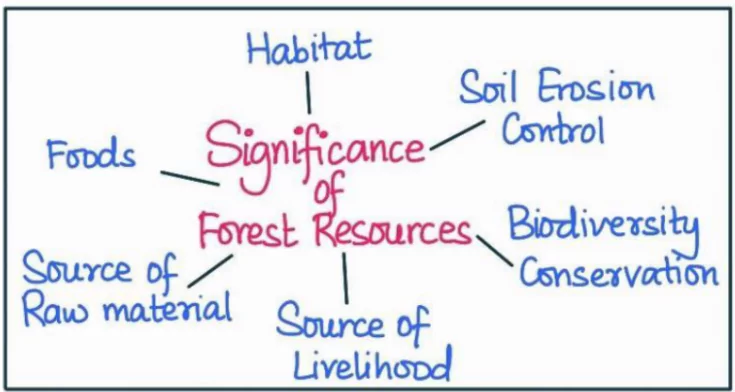Introduction
According to India State of Forest Report, 2021, India has forest on around 24% of geographical area. Forests provide numerous tangible and intangible benefits that could pave the way for achievement of SDGs outlined in 2015.
Body
Forest resources in India are impactful for achieving SDGs 2030 in following ways:

- Poverty Alleviation: SDG 1 (No Poverty) and SDG 8 (Decent Work and Economic Growth) are supported through activities such as sustainable harvesting of non-timber forest products like honey, bamboo, and medicinal plants.
- Sustainable Agriculture: SDG 2 (Zero Hunger) can be achieved by promoting agroforestry and incorporating sustainable forest management techniques.
- Biodiversity Conservation: Forests support various endangered species such as the Royal Bengal Tiger and conserving them will contribute to SDG 15 (Life on Land).
- Climate Change Mitigation: The Agroforestry initiative in Haryana promotes tree plantation in agricultural lands, reducing carbon emissions thus contributed to SDG 13 (Climate Action).
- Water Conservation: SDG 6 (Clean Water and Sanitation) can be achieved by protecting forested areas, such as the Western Ghats, which act as water catchment areas and provide clean water to millions.
- Renewable Energy: SDG 7 (Affordable and Clean Energy) can be addressed by promoting sustainable forest-based bioenergy projects, like biomass power plants, that reduce dependence on fossil fuels.
- Sustainable Tourism: Promoting responsible tourism in such areas supports SDG 8 (Decent Work and Economic Growth) and SDG 12 (Responsible Consumption and Production).
Challenges faced in conservation of forest resources in India
- Development pressure: The construction of infrastructure projects like dams and highways often requires clearing large forest areas, leading to habitat loss for wildlife and disruption of ecosystems. Example- Clearing of Aarey forests for Mumbai metro.
- Deforestation: For instance, the conversion of forests into agricultural land in states like Assam and Madhya Pradesh threatens forest resources.
- Illegal logging: Unregulated logging for timber and fuelwood leads to forest degradation. The rampant illegal logging in the state of Jharkhand endangers valuable forest resources.
- Forest fires: Forest fires, often caused by human activities or natural causes, contribute to forest loss and degradation. Eg: recurring forest fires in Uttarakhand and Himachal Pradesh.
- Wildlife poaching and trafficking: The poaching of tigers in the Sunderbans or the illegal trade of endangered species like pangolins in Northeast India are prime examples.
- Invasive species: The proliferation of invasive species like Lantana camara in the Nilgiri Biosphere Reserve affects forest diversity and regeneration.
- Lack of community involvement: The lack of community involvement in the Banni grasslands of Gujarat affects the sustainable use of forest resources for community benefits.
Measures to overcome these challenges
- Effective implementation of FRA, 2006: For instance, Kanger Ghati National Park in Chhattisgarh where it has been fully implemented resulted in positive impact.
- Promoting Community engagement: For instance, the Joint Forest Management program in India encourages local communities to participate in decision-making and benefit-sharing. Example- involving Gaddi and Gujjar tribes in Himalayan states.
- Strict Enforcement of Anti-Logging Measures: The creation of special task forces like the Forest Protection Forces in various states of India has been effective in curbing illegal logging.
- Encouraging Reforestation and Afforestation: Promoting reforestation initiatives, such as planting native tree species and restoring degraded forests, can help in replenishing forest resources. Eg: the Green India Mission.
- Strengthening International Cooperation: Collaborating with international organizations and neighbouring countries can facilitate the exchange of knowledge, resources, and best practices.
Conclusion
These measures, if implemented effectively, can help address the challenges faced in forest resources conservation in India, ensuring the preservation and sustainable management of this vital natural asset as well as contribute towards achievement of SDG 2030.
To get PDF version, Please click on "Print PDF" button.


Latest Comments